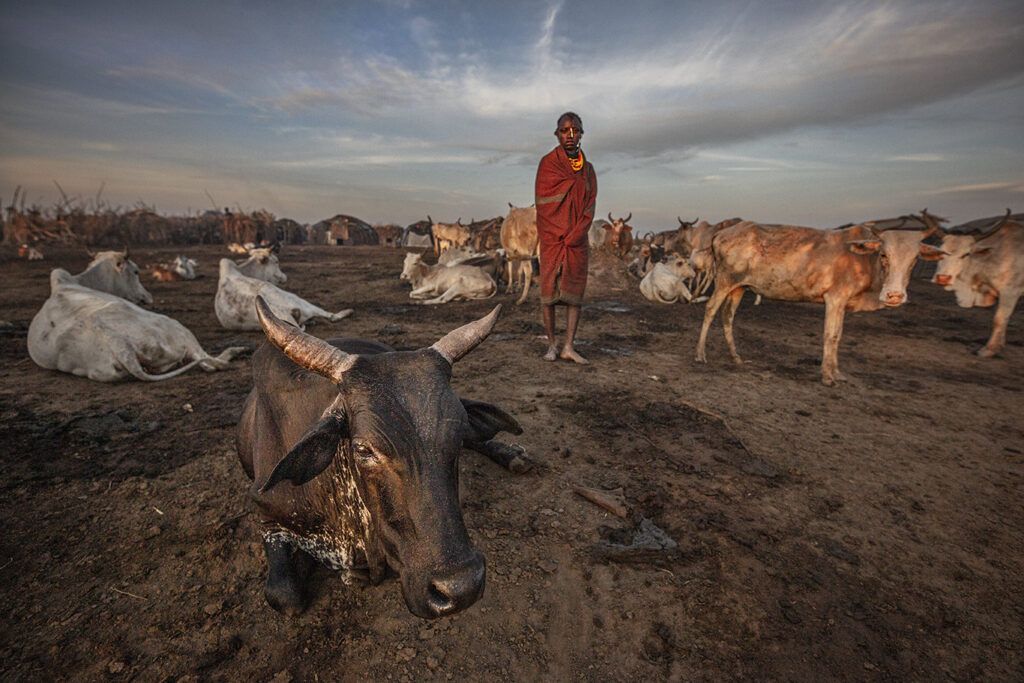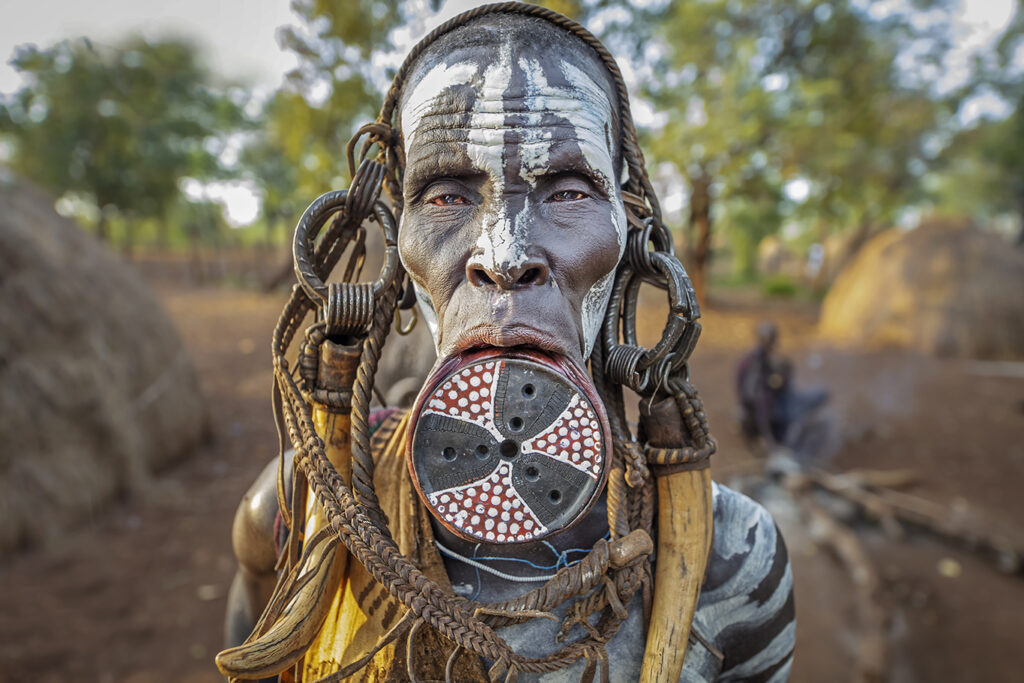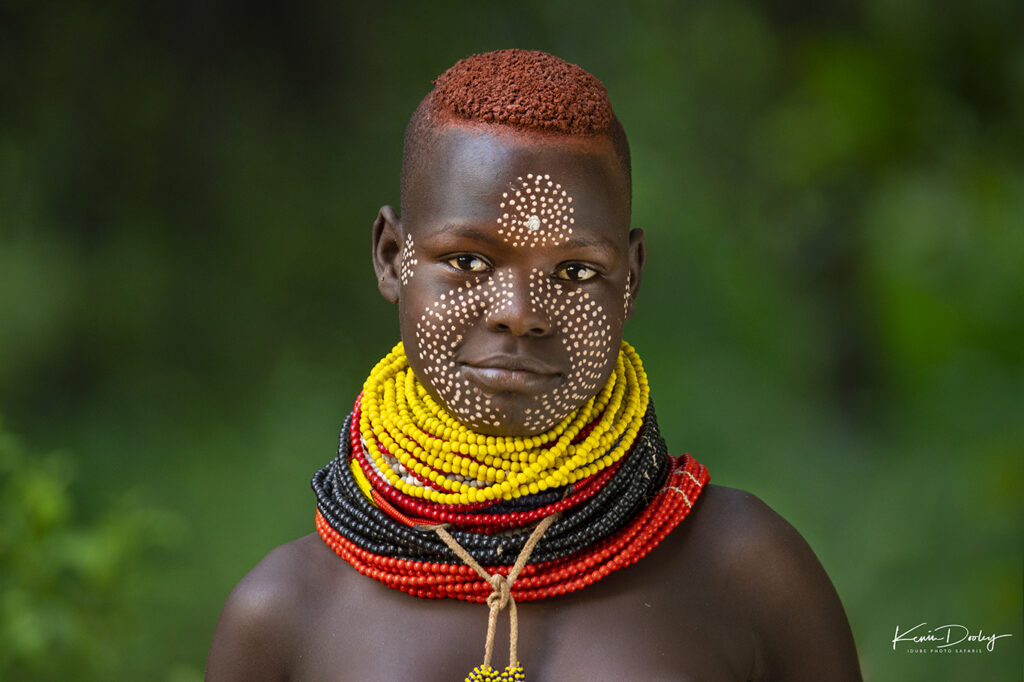
Omo Valley Tour
Ethiopia
Omo Valley Tour
Expedition to the remote and Exotic Tribes of the Omo Valley
Isolated for millennia from the rest of the world, the beautiful Omo Valley is home to an exciting mix of many small and distinctive tribal groups. Amongst others, we find the Karo, the Mursi, and the Hamer — all of whom have retained their own unique customs and traditions. Photograph and visit these amazing people on our Omo Valley photography tour.
Lifestyles are as varied as the tribes themselves. Lacking any material, culture and artifacts common to other cultures, these tribes find unique ways in which to express their artistic impulses. Both the Surma and the Karo, for example, are experts at body painting, using clays and locally available vegetable pigments to trace fantastic patterns on each other’s faces, chests, arms, and legs. These designs are created purely for fun and aesthetic effect, each artist vying to outdo the others.
TRIP HIGHLIGHTS
- Meet and photograph various ethnic groups.
- Experience the natural beauty of the country from the stunning savannah plains and elaborately terraced hillsides to the vast coffee fields.
- See the elaborate hairstyles and personal adornment.
- Visit colorful and exuberant African markets.
- Tour the vibrant city of Addis Ababa.
- Try the varied Ethiopian food.
- Attend an Ethiopian coffee ceremony.

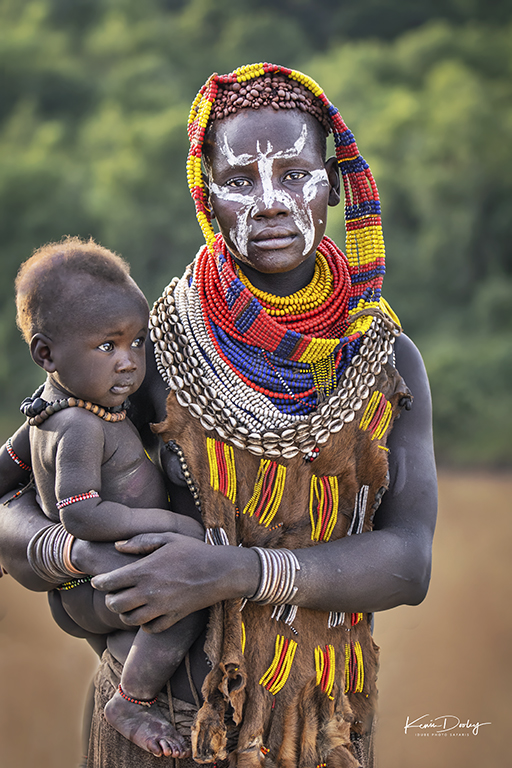
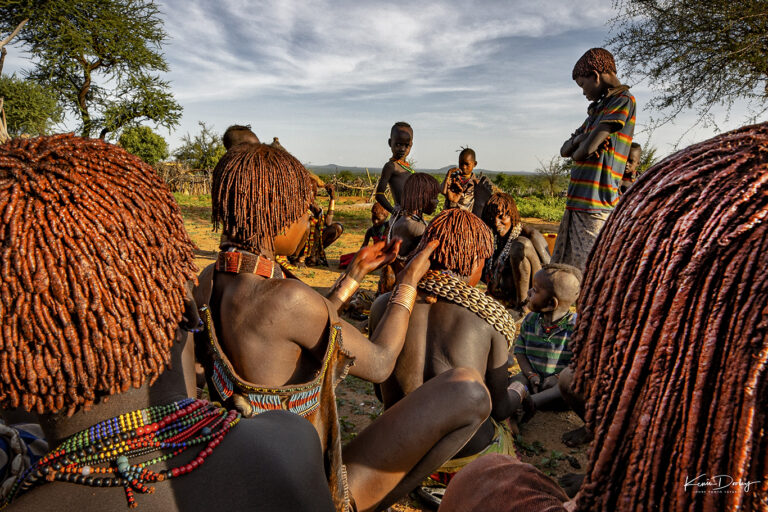
Omo Valley Tour Details
Day 1: Arrive Addis Ababa
March 23rd
Arrive at Bole International Airport, Addis Ababa, Ethiopia. Welcome to Ethiopia. Upon arrival, you will be welcomed by your local tour leader and transfer to Golden Tulip Hotel.
Addis Ababa, founded in 1886 by Menelik II, is situated at 2,500 meters (8000 ft) above sea level. It is the highest capital city in the world, after La Paz and Quito in South America. The city enjoys an excellent climate all year round, with an average temperature of 25C (77F). Addis Ababa is a pleasant city with wide avenues of jacarandas, interesting museums, and one of the largest open-air markets in Africa, known as the “Mercato”.
The rest of the day, relax in your beautiful hotel and get ready for the unique adventure awaiting.
Overnight at Jupiter Hotel-Addis Ababa.
March 24
Day 2: Addis Ababa-Arbaminch (B-L-D)
Wakeup early in the morning to enjoy your breakfast enjoy with the best coffee at its birthplace.
After breakfast, we have a pre-tour briefing. Here we will discuss different useful information before you go ahead on your photo trip to the Omo Valley, one of the most remote places on the planet.
After the pre-tour briefing, we will meet our driver for the transfer to Addis Ababa Airport for our flight to Arbaminch. A 40 minute flight takes us to the Great Rift Valley.
Upon arrival at Arbaminch Airport, you will meet with your drivers and start driving north to mountain village of Chencha located on the South Western escarpment of the Great Rift Valley running north south all the way to Mozambique. This is the home of the Dorze people. The Dorze people, once famous warriors in the region, they are now renowned cotton weavers whose tall beehive shaped and bamboo woven dwellings are among the most distinctive structures to be seen any where in Africa.
Our visit to this village and the unique cultural experience is a nice way to get slowly and perfectly away from the modern life we are leaving behind and the authentic tribal experience awaiting for us deep in the Omo Valley. As the sun goes down, we will drive back to Arbaminch enjoying the beautiful view with the sun set and drive through hundreds and hundreds of cattle herds here and there as they come back from their field.
Overnight – Paradise Lodge-Arbaminch
Day: 3 & 4: Arbaminch-Erbore-Hamer/Desanech
After breakfast, we will continue driving further to the Omo Valley. Driving from Arbaminch to Turmi, noting prepares you for the exciting experience awaiting you as we will be driving through many tribal villages and small towns including the Tsemay and Konso. Our last destination today is the Turmi, home to the beautiful Nomadic Hamer Tribe living on side of Keske River.
Past the Woito River, we will stop at the Erbore Village. These are small number of nomadic pastoralists who lives near Chew Bahir (Salt Lake) in a low, hot and flat land in four small villages. The Erbore, which means “land of the bull’ are famous for their unique cultural activities including their decorations, bids, body paintings on their elegant face. They are truly one of the most attractive tribes of the Omo Valley.
After visiting the Erbore Tribe, we will drive to Jinka en-route visiting the Key Afer weekly market. Every Thursday, the Hamer, Ari, Bena and Tsemay tribes come together to this weekly market to sell, buy and barter different goods and daily items.
After spending some hours with the beautiful tribes at a good light, we will then drive to Turmi, the center of the Hamer Tribe.
The Hamer, display an elaborate and diverse selection of body decorations. They are also identifiable for their high cheekbones, elaborate custom of beads, cowries and leather, and thick copper necklaces The Hamar women are striking; wearing beautiful colorful beaded skins, ornate necklaces, and metal bangles around their wrist and ankles. Famous for their hairstyle — a crown of long dread-lock braids covered in ocher — the Hamer women are the most decorated of the Omo people. We expect to arrive at the lodge for late lunch be in time to visit Hamer village with good light.
For the next two nights, we will be based here at Turmi Village the center of the Hamer Tribes and other tribes living in the surrounding area. This will give us a great chance to attend different rituals including, Evangad and Bull Jumping Ceremonies in some of the off-road tribal villages. From our base here, will help us great deal to create a wonderful photographic opportunity for the next three nights. This allows us to be flexible and capitalize on all the photographic opportunities in the area. During our stay in Turmi, we will visit the Abore and Dassenech tribes.
Isolated for millennia from the rest of the world, the beautiful Omo Valley is home to an exciting mix of many small and distinctive tribal groups. Amongst others, we find the Karo, the Mursi and the Hamer-all of whom have retained their own unique customs and traditions. Lifestyles are as varied as the tribes themselves. Lacking any material, culture and artifacts common to other cultures, these tribes find unique ways in which to express their artistic impulses. Arbore women are well known for their long headdresses. The girls shave their heads to indicate virginity, and only start growing hair after marriage. The Daasanech are a semi-nomadic tribe living on the shore of Omo. Their clans stretch across Sudan, Kenya and Southern Ethiopia. They are known for their very unique and ornate hair buns. Both the Surma and the Karo, for example, are experts at body painting, using clays and locally available vegetable pigments to trace fantastic patterns on each other’s faces, chests, arms, and legs. These designs are created purely for fun and aesthetic effect, each artist vying to outdo his fellows.
In this captivating region, you are privileged to witness age-old customs and rituals, learning of the symbolisms that remain an integral part of everyday life, it’s absolutely a unique wilderness.
Overnight at Buska Lodge- BLD
Day 5 & 6: Karo-Dus
This morning, one final shooting with the Hamerr before we continue our drive to the Kara Tribe residing on the shore of the beautiful Omo River. The Kara are the masters in body & face painting which they practice on daily bases. Before their rituals and dances they carefully paint their faces and body as well as the faces of their friends using different color soil, mineral, plan pigments, flowers, white chalks and black charcoal. Men are mostly will be well decorated with red clay hair buns, mostly prepared for days to be ready for the event. The men create highly decorated clay hair buns, which can take several days to complete.
For the next couple of days, you will have the chance to mingle with Karar and sepend quality time with them, learning about their dayly activities including attending different rituals, follow them as they herd thenir cattles, do farming. You Over the next three days, you will spend quality time with them in their villages going about their daily activates, along the river planting their crops, watching the livestock being herded into the village, and enjoying their traditional tribal dancing in the evening. There will also be plenty of time to create stunning individual or group portraits. We will also visit Kocho village and possibly the village of Lubuk
Dus, the main village of the Kara Tribe, will be our home for the next three nights. We have set up a proper mobile safari camp with canvas tents, along the banks of the Omo River, in a lush forest area, near the village. This will allow you to immerse yourself into their culture and maximize the amount of time you will be able to spend with them.
Overnight in Dus -Proper mobile camp BLD
Day 7: Karo-Mursi
In the morning, drive to Jinka en-route visiting different tribal villages like the Bena and possibly small tribal markets depending on the day of the week. At Jinka we will visit the Ari tribal villages and we will witness their daily activities and a great photography opportunity to photograph when they do be-keeping, blacksmith work as well as different hand crafts.
Overnight: Eco Omo Lodge-Jinka. BLD
Day 8: Visit Mursi-
In the morning, we will drive through Mago National Park to visit Mursi Village. We will arrive at the Mursi Village at good time to photograph the Mursi Tribes at good lunch.
The Mursi, undoubtedly the most celebrated residents of South Omo are distinctive group of pastoralists. The Mursi are best known for their unique item of decoration, lip plates. Women of Mursi wear circular clay plate on their lower lip and the bigger a women can wear, the greater her value when she get married.
In the afternoon, visit the Ari Village near Jinka. The Aris are famous for their poetery and blacksmith work and you will be previlage to photograph their day today activity.
Overnight: Eco Omo Lodge-Jinka. BLD
Day 9: Photographing the Mursi
Another Morning session with the Mursi photographing the Mursi Villag. This time we will try a different village.
In the afternoon, visit the Jinka Ethnographic Museum which features the culture, history and daily objects of the tribes living in the Omo area.
March 31st
Day 10: Photographing the Mursi
We will photograph the Mursi for one last session at a good light. This time we will go back to one of the villages we have been alrady.
Late afternoon, we take the flight back to Addis Ababa. You will have a room to refresh. In the evening, there will be farewell dinner party with traditional special buffet and local drinks. There will also be cultural dance show of the different ethnic groups living in the country. There will not be any better way of ending a trip. In the evening, transfer to Bole International airport for the flight back.
Remote tribes of the Omo Valley, where ‘Exotic’ finds true meaning here.
March 21 or 22 Depart for Addis
Arrive March 23 Hotels for extra nights are additional.
COST INCLUDES:
1. All internal travel, tours and excursions with 4×4 vehicles
2. All Accommodation at the hotels specified on itinerary
3. All meals as listed on the above itinerary – B=Breakfast, L= Lunch, D= dinner
4. All entrance fee to villages
5. Airport facilitation, meeting and greeting, transfers upon arrival and departure.
6. VAT and local taxes
7. bottled water as required
8. Beer, wine, Soda, coffee, and tea included with meals
9. Two local guides at all village visits
10. Domestic flight from Addis to Jinka
- Cost does not include
- Photography fees approx $350.00
- Tips and gratitude for guides, camp staff and drivers
- Items of personal nature
- International flights
- Additional Hotel stays
- visa
- Travel Insurance
- Meals and beverages on arrival and departure days
- This is not a workshop
